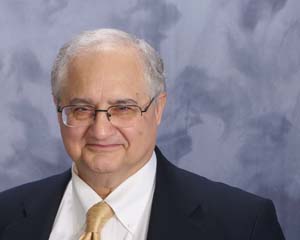Introduction to Distance Education: Theorists and Theories: Börje Holmberg
By Dr. Farhad (Fred) Saba
Founder, Distance-Educator.com
Börje Holmberg was born in 1924 in Malmö, Sweden. He studied English, German, Romance Languages and Education at the University of Lund, where he earned his doctorate in 1956. It was also at this time when he became educational director of Hermods in Sweden, then the largest distance teaching organization in Europe. In the 1955-75 period Hermods enrolled between 75,000 and 100,000 students each year. In 1966 Holmberg was appointed Director General of Hermods Foundation and resigned from this position, when the Swedish government took over Hermods in 1975.
During his time at Hermods, Holmberg published several seminal studies in distance education. In 1976, Holmberg became Professor of distance education methodology and Director of the Institute for Distance Education Research at the FernUniversität in Hagen, Germany. During this time, he published several books and a great many contributions to scholarly journals. Among his works is Theory and Practice of Distance Education, a second and revised edition of which was published by Routledge in 1990. After his retirement from the FernUniversität Börje Holmberg has continued contributing both to research and debate on distance education as an active practitioner in the field.
Holmberg is primarily known for his theory of personal communication between instructors and learners in distance education. It is the feeling of empathy for the learner that leads instructors to become major supporters of their learning. He established the concept of guided didactic conversation to formalize his theory of distance education.
In Theory and Practice of Distance Education Holmberg (1995) stated that:
My approach to guided didactic conversation as a pervasive characteristic of distance education is based on the seven postulates:
- That feelings of personal relation between the teaching and learning parties promote study pleasure and motivation.
- That such feelings can be fostered by well-developed self instructional material and two-way communication.
- The intellectual pleasure and study motivation are favorable to the attainment of such goals and the use of proper study process and methods.
- That the atmosphere, language and convention of friendly conversation favour feelings of personal relation according to postulate 1.
- That messages given and received in conversational forms are comparatively easily understood and remembered.
- That the conversation concept can be successfully translated for use by the media available, to distance education.
- That planning and guiding the work, whether provided by the teaching organization or the student, are necessary for organized study, which is characterized by explicit or implicit goal conceptions. (Page 47).
As such, Holmberg puts the learner and his or her communication with the instructor at the center of the process of teaching and learning in distance education. This personal communication is an essential cornerstone of the theory of distance education, a concept that often is neglected when information technologies are used to by pass or circumvent instructor-learner communication through guided didactic conversation.
REFERENCE
Holmberg (1995). Theory and practice of distance education. New York, NY: Routhledge.








